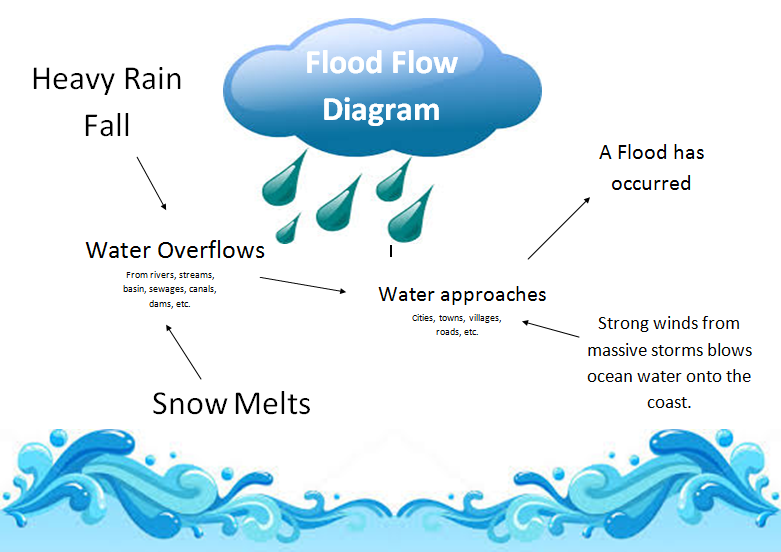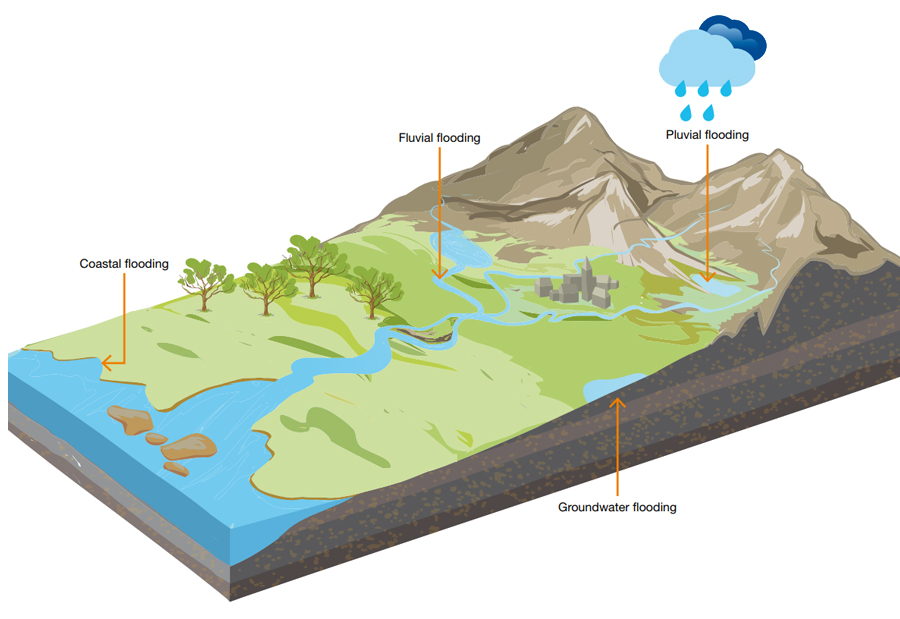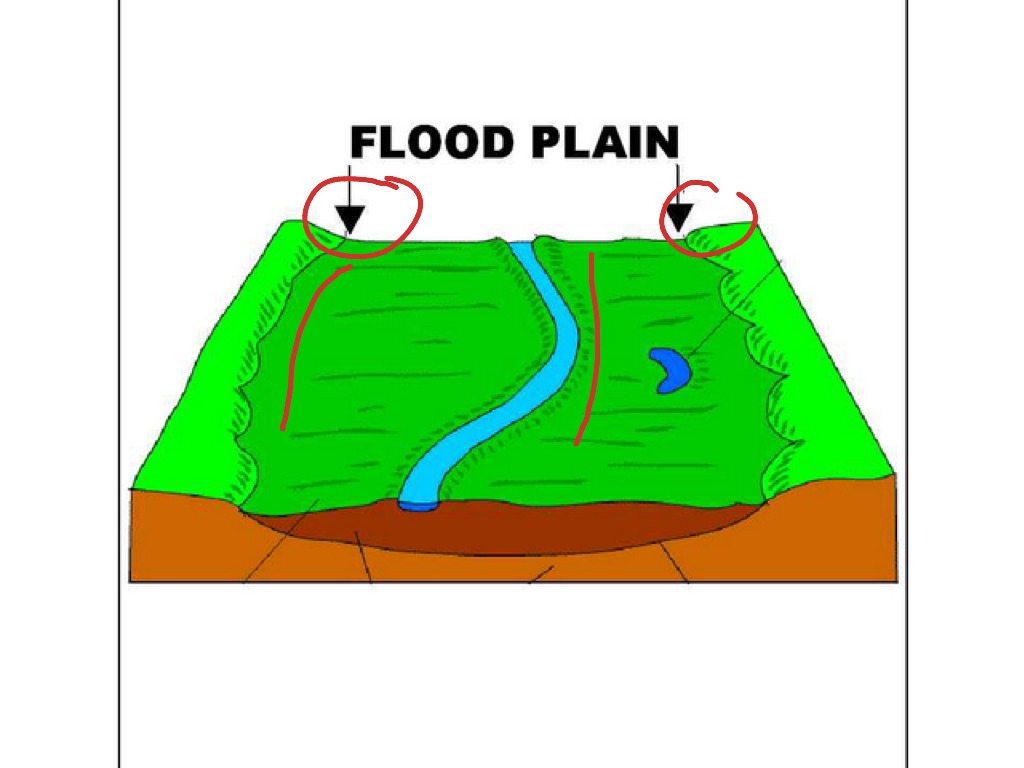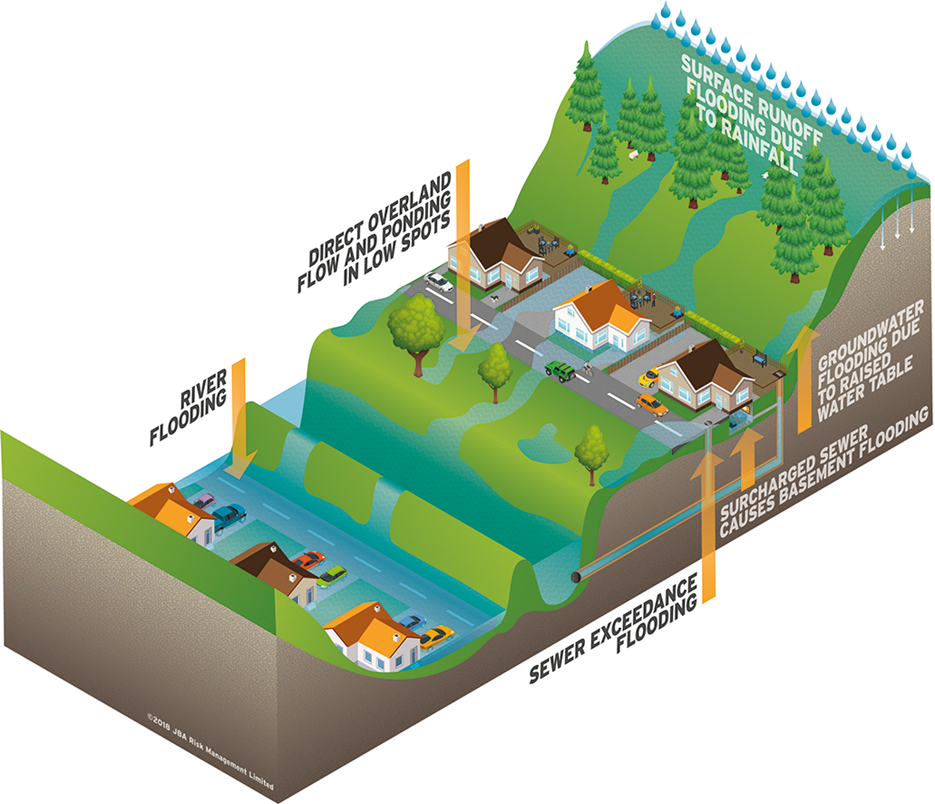
Floodplain Features. Geology, Physical geography, Floodplain
A floodplain (or floodplain) is a generally flat area of land next to a river or stream. It stretches from the banks of the river to the outer edges of the valley. A floodplain consists of two parts. The first is the main channel of the river itself, called the floodway.

How Floods Occur Natural Weather Disaster Assignment
The FEMA Flood Map Service Center (MSC) is the official online location to find all flood hazard mapping products created under the National Flood Insurance Program, including your community's flood map. Map Service Center National Flood Hazard Layer Using Flood Maps

A typical watershed; consisting of the stream channel, the adjoining banks, floodplain and
Created Date: 11/3/2009 3:21:27 PM

What factors contribute to floods? Office of the Queensland Chief Scientist
Currently there are eleven building diagram numbers. FEMA is simplifying and consolidating foundation types by reducing these down to six , grouped by non-elevated or elevated. Slab-on-Grade (non-elevated) Grade building whose foundation is slab-on-grade or slab-on-stem-wall with fill.

Types of Flooding in the UK Floodguidance.co.uk
Last updated March 5, 2020 Return to top Any of the numbers used in the instructions to the NFIP Elevation Certificate to identify the diagrams of the main types of buildings.

Types of Flooding in the UK Floodguidance.co.uk
When water inundates land that is normally dry, this is called a flood. Floods can be caused by a number of processes, but the dominant cause in Australia is rainfall. Floods are a natural process, but mankind's activities affect flooding. Floods occur at irregular intervals and vary in size, area of extent, and duration.

Meanders and floodplains
The USGS collects flood data and conducts targeted flood science to help Federal, State, and local agencies, decision makers, and the public before, during, and after a flood. Our efforts provide situational awareness, drive predictive models, inform infrastructure design and operation, undergird floodplain mapping, assist flood constituent/load quantification, and facilitate flood impact.

Three common types of flood explained Zurich Insurance
The Elevation Certificate Building Diagrams. The EC has building diagrams to help you decide which measurement to use as the Lowest Floor Elevation for rating purposes. Each diagram can be categorized into one of the three building types: Slab on grade. Buildings with basements. Elevated buildings.

What is urban flooding and how does it affect us? Wavin UK Blog
Types of Flood Zones Before we dive into each Building Diagram on the Elevation Certificate (EC), let us review the flood zones. There are two types of flood zones: Non-Special Flood Hazard Areas Special Flood Hazard Areas A Non-Special Flood Hazard Area (NSFHA)is an area that is in a moderate-to-low risk flood zone (Zones B, C, and X).

What are the causes of flooding? The Flood Hub
Each building diagram shows measurement levels that correspond to items from Section C (such as "C2.a"). These levels will be used to determine the elevation difference between the Lowest Floor Elevation and the Base Flood Elevation for flood insurance rating purposes.

Three common types of flood explained Zurich Insurance
FEMA.gov

FileFlood Diagram.jpg Glen Canyon Dam AMP
APRIL 2021 NFIP FLOOD INSURANCE MANUALC • 1 Appendix C: Lowest Floor Guide Lowest Floor Guide PUTTING IT INTO PERSPECTIVE… Section A and C of the Elevation Certificate (EC) provide fields for entering numerous measurements that the surveyor must record in completing an elevation survey.

How is a Floodplain formed? Geography ShowMe
A floodproofed building is a building that has been designed and constructed to be watertight (substantially impermeable to floodwaters) below the BFE. Floodproofing of residential buildings is not permitted under the NFIP unless FEMA has granted the community an exception for residential floodproofed basements.

What are the causes of flooding? The Flood Hub
1. Get a flood map from FEMA's map service center. You can go online to FEMA's website and find highly-detailed digital maps. Type an area into the website's search bar to bring up the map. The maps are available at https://msc.fema.gov/portal. [1] You can also find maps in community map repositories.

An Introduction to Flooding Terms JBA Risk Management
Flooding Simulation - Concord Consortium

Floods / Taranaki Civil Defence and Emergency Management
Enter the diagram number in Item A7, the square footage of crawlspace or enclosure(s) and the area of flood openings in square inches in Items A8.a-c, the square footage of attached garage and the area of flood openings in square inches in Items A9.a-c, and the elevations in Items C2.a-h.